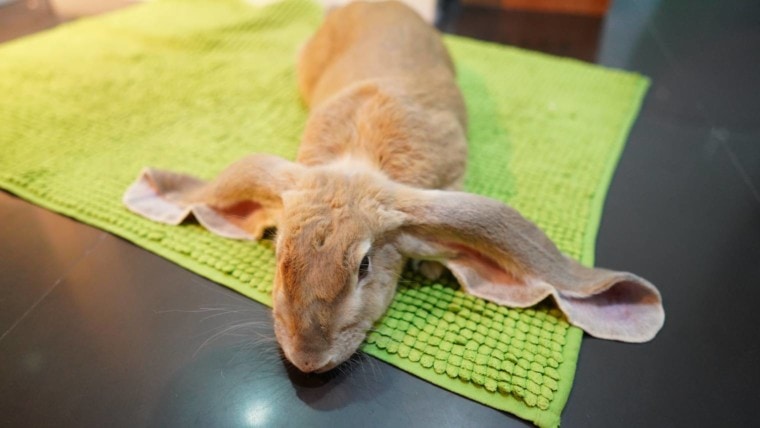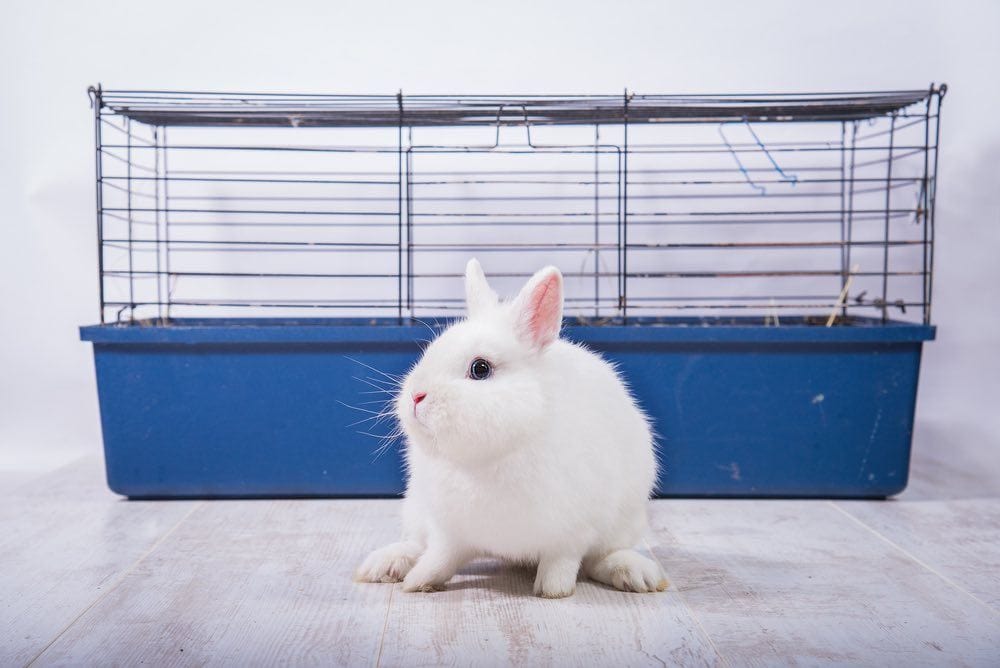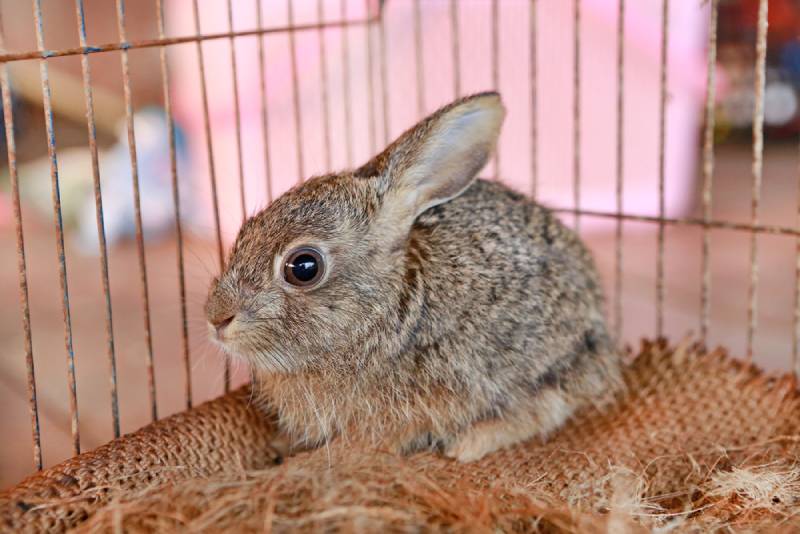
Because of their sensitive feet and fondness for play, choosing the right flooring for your rabbit can go a very long way towards keeping them happy and healthy. Whether it’s for their enclosure or to help give free-roaming rabbits better traction on smooth floors, the best flooring options will all make your rabbit feel more comfortable and at home in their environment.
An indoor rabbit, left to its own devices, is bound to get into mischief. When they’re feeling energetic, many rabbits will decide to nibble, nose, and nudge their way all around the house—sometimes chewing and scratching at furniture and shoes that we’d rather they leave alone. Thankfully, choosing the right type of flooring for your rabbit can go a long way towards preventing this behavior!
Today we’ll be looking at three types of flooring for rabbits, and giving you the pros and cons of each to help you decide what sort of flooring is best for your home and your rabbit. Read on to find out more!
The 3 Best Types of Flooring for Rabbits:
1. Rugs and Carpets: Ideal for Free-roaming Buns

If your rabbit has free run of the house for even part of a day, covering large areas of your floor with a selection of rugs and carpets is a fantastic way to encourage them to run, play, and lounge at ease. By giving them better traction, you also reduce the chance of any injuries that could occur from slipping and sliding on tile or hardwood floors.
It is worth taking the extra time and effort to find natural fiber rugs and carpets for your rabbit. Why? They are easier to clean, and if nibbled on will harm your rabbit’s digestion much less than plastics. Look for darker colors to minimize the appearance of stains.
2. Vinyl Flooring: The Best Flooring for Rabbit Cages, Pens, and Hutches

For ease of use in cleaning up around the litter box, vinyl flooring can’t be beaten. As a cheap option for covering large areas, it’s our recommended flooring material of choice for placement beneath rabbit cages—and especially around their bathroom corner. Simply sweep and wipe it clean when it’s dirty.
When cutting and arranging vinyl flooring, be sure to leave an extra lip outside of your rabbit’s cage. This helps to minimize how many corners and edges are accessible for easy chewing. If your rabbit is especially fond of chewing, be careful to make sure that they aren’t allowed to eat any synthetic materials!
3. Straw and Grass Mats: Functional and Chewable

Sometimes, no matter how many toys and chewing alternatives you give your rabbit, it’s just not possible to keep them from munching away on their flooring. If your rabbit is a heavy chewer, even natural fiber rugs and carpets can begin to threaten their health with the risk of GI stasis.
So, what’s a responsible rabbit owner to do in a situation like this? Though it may end up being a bit messier and more expensive in the long run, untreated straw and/or grass mats are a sophisticated solution to this problem. They’ll give your rabbit the traction of a rug or carpet, but in an entirely edible format.
Try to keep your grass and straw mats away from the litter box corner of your rabbit’s enclosure. Once they get wet, there’s a good chance of mold, especially if your rabbit urinates on them. At that point, it’s better just to throw the mat out.
Rabbit Flooring to Avoid
We don’t recommend using chunks of carpet. This is because your rabbit is very likely to chew them when they get bored. This could potentially cause your bunny to get sick. Not to mention they’re also fairly absorbent so again, these would lead to foul smells.
Plastic flooring may be a bit too slippery for your rabbit so we don’t recommend using this as an option. If your rabbit decides to chew the plastic it is also likely to get sick. This is because you’ll probably be reusing old materials that aren’t necessarily fit for use with rabbits.
Conclusion
The right flooring can make a great difference in your rabbit’s quality of life and enjoyment of its environment. Try to give them plenty of natural fiber to run and play on, with vinyl flooring inside of their enclosure for ease of cleaning. While there may be no one best flooring for all situations, we hope this article has taught you everything you need to know to make an informed decision for your rabbit’s home!
- See also: How to Set Up a Rabbits Cage: 6 Key Tips
Featured Image Credit: Krit Akaravanich, Shutterstock









